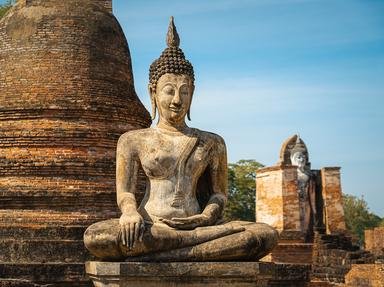Quiz Answer Key and Fun Facts
1. José de San Martín was a general and a leader in the successful struggle for independence from Spain. The pictured equestrian statue stands in the plaza named for him in the capital of which country?
2. Argishti I, the sixth known king of Urartu, reigned from 786-764 B.C. By conquering northern Syria he made his state the most powerful in the region. Early in his reign, he founded the city of Erebuni. The pictured statue can be seen in that city, although it is today named Yerevan and is the capital of which country?
3. There are many statues of this man, Holy Roman Emperor from 800 until 813 and arguably the most powerful leader in medieval history. Two of them are equestrian statues, one located near Notre-Dame in Paris and the pictured one in Liege, Belgium, near his birthplace. Who does this statue commemorate?
4. There are many statues to this man, a hero in numerous South American countries. The pictured one stands in the city of Cartagena, Colombia, on the Caribbean coast in the department named for him. Who is this military and political leader who played a key role in gaining independence from the Spanish Empire?
5. The pictured statue stands in the courtyard of the world's largest ancient castle, Prague Castle in the Czech Republic. It commemorates a man who is the patron saint of at least two European countries, although the Czech Republic is not one of those. Who is doing battle from horseback here?
6. Twelve years in the making, the pictured equestrian statue of Peter the Great by French sculptor Étienne Maurice Falconet, was completed in 1782. Later dubbed "The Bronze Horseman", from a poem of that name by Pushkin, the statue is today one of the iconic images of which city?
7. Erected in 1908, the Equestrian Statue of King Chulalongkorn Rama V the Great dominates Royal Plaza in the heart of which Asian capital city?
8. This equestrian statue commemorates the man born José Doroteo Arango Arámbula in 1878, but better known as Francisco Villa or by his nickname Pancho Villa. A revolutionary general he is now a national hero in which Latin American country?
9. Standing at the intersection of Langebrugsteeg and Rokin in Amsterdam, is this statue of which monarch, whose 58-year reign encompassed both World Wars?
10. The pictured 13-foot high equestrian bronze statue that is depicted on the back of the Italian 0.50 euro coin can be seen in the Capitoline Museums in Rome. Many bronze statues were melted down to make coins in the Middle Ages, and this is the only fully surviving bronze statue of a pre-Christian Roman emperor. Which emperor, who ruled from 161 A.D. until his death in 180, is commemorated here?
Source: Author
EnglishJedi
This quiz was reviewed by FunTrivia editor
stedman before going online.
Any errors found in FunTrivia content are routinely corrected through our feedback system.

